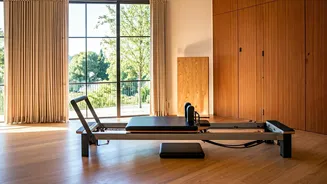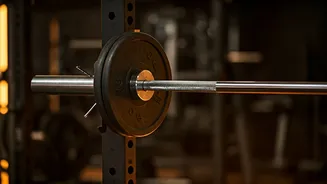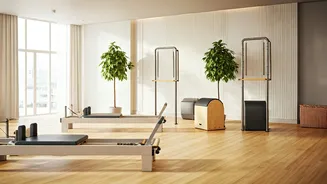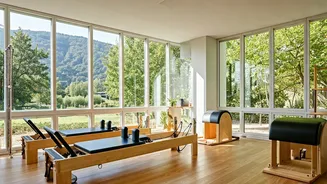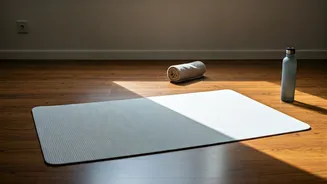Pilates Fundamentals Unveiled
Pilates is a system of exercises designed to improve physical strength, flexibility, and posture. Developed by Joseph Pilates in the early 20th century,
it focuses on controlled movements and precise techniques. Unlike high-impact gym workouts or simple walking routines, Pilates emphasizes core strength and body awareness. At its core, Pilates centers around six key principles: concentration, control, centering, precision, flow, and breathing. These principles are applied in every exercise, helping to build a mind-body connection. The exercises are typically performed on a mat or with specialized equipment. A typical Pilates session involves a series of exercises that engage different muscle groups, with emphasis on the core. Many exercises incorporate variations that allow them to be done at varying levels of difficulty, so they are suitable for all fitness levels. This contrasts with gym workouts that often target specific muscles using heavy weights and walking which provides lower impact exercise.
Pilates vs Gym Workouts
Gym workouts generally involve lifting weights, using cardio machines, and often focus on building muscle mass and overall strength. Pilates, however, prioritizes core strength, flexibility, and postural alignment. While gym workouts can be intense and lead to rapid muscle growth, they may sometimes overlook the importance of balanced muscle development and flexibility. Pilates, on the other hand, ensures that muscles work together in a coordinated manner, which can reduce the risk of injury. Moreover, gym workouts require access to equipment and a structured environment, while Pilates can be done at home with minimal equipment like a mat and resistance bands. The intensity levels and types of training are different. Gym routines often demand high levels of physical exertion and resistance, which may not be suitable for all individuals. Pilates offers a more controlled approach, making it accessible to people of different ages and fitness levels. The gym, typically, is a location offering a variety of classes and access to trainers. Pilates is known for its customized approach.
Pilates Versus Walking
Walking is a low-impact exercise suitable for almost everyone. It's an excellent way to improve cardiovascular health, burn calories, and boost mood. But while walking offers several benefits, it may not provide the same comprehensive body conditioning as Pilates. Walking mainly engages the lower body and provides limited core engagement and upper-body strengthening. In contrast, Pilates exercises are designed to work the entire body, enhancing both strength and flexibility. Pilates involves controlled movements that target specific muscle groups and improve posture, making it more effective for overall body conditioning. While walking is a great way to stay active, it doesn't always provide the same focus on core strength and precise muscle control. Pilates, on the other hand, emphasizes these aspects, leading to improved balance, coordination, and body awareness. Walking is accessible and does not require any special skills. Pilates may require an understanding of body mechanics and proper exercise techniques.
Pilates at Home Guide
Practicing Pilates at home is very doable with a bit of planning and discipline. Begin with a mat to provide cushioning and support. You may also include equipment such as resistance bands, a Pilates ring, or a small exercise ball. Start with simple exercises, focusing on proper form rather than speed. Breathing is essential in Pilates. Inhale deeply to prepare for an exercise and exhale as you execute the movement, engaging your core muscles. Examples of exercises you can do at home include the hundred, roll-up, single-leg circles, and the saw. Start with 5–10 repetitions of each exercise, gradually increasing the number as you get stronger. It's also important to create a routine and stick to it. Consistency is the key to seeing results. Even 15-20 minutes of Pilates a few times a week can make a significant difference. Consider using online resources such as videos or apps to guide you through the exercises. This can provide instruction and motivation.
Benefits Summarized
Pilates provides a range of benefits. It improves core strength, which is essential for good posture, balance, and stability. Pilates can also boost flexibility and range of motion, which can reduce the risk of injury and improve overall physical performance. Pilates enhances muscle tone and strength, leading to a more sculpted physique. The emphasis on controlled movements helps to build lean muscle mass. Practicing Pilates regularly helps to improve body awareness and coordination, making everyday movements easier and more efficient. Pilates exercises reduce stress and improve mental focus through controlled breathing and mindful movements. Pilates can be modified to suit all fitness levels. It is also an effective way to rehabilitate injuries and manage chronic pain, as it strengthens the muscles that support joints. Pilates offers a low-impact form of exercise, making it an excellent choice for individuals of all ages and fitness levels.





